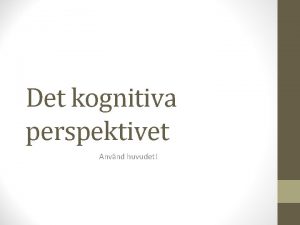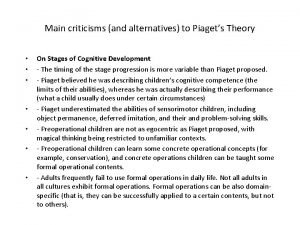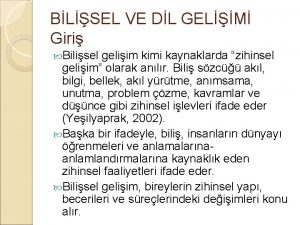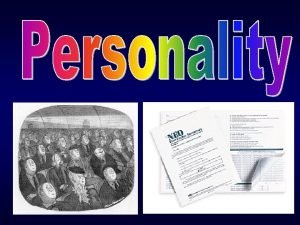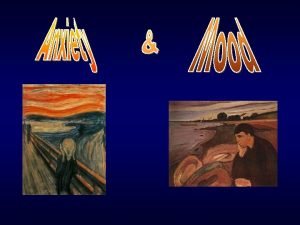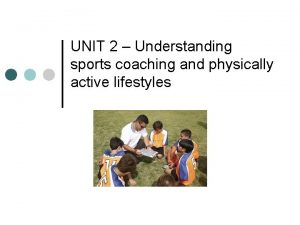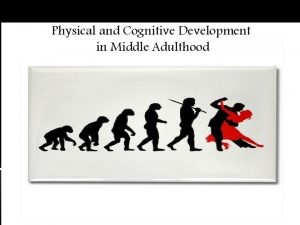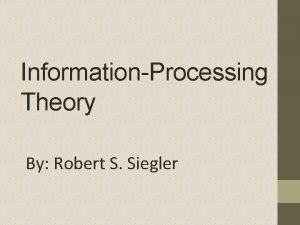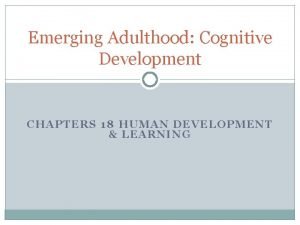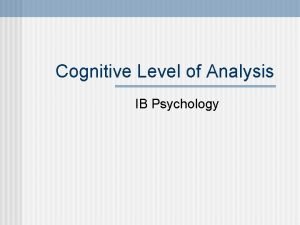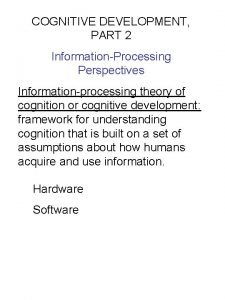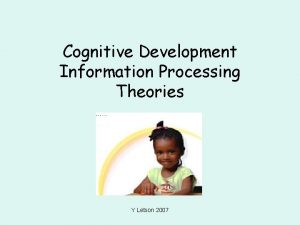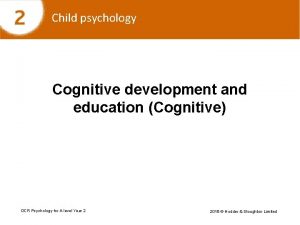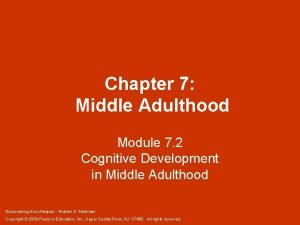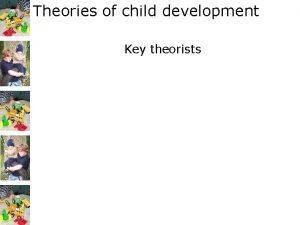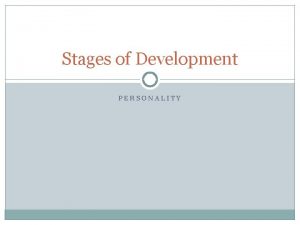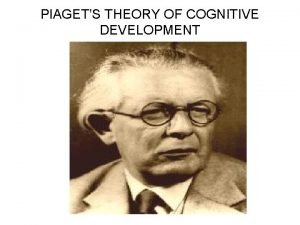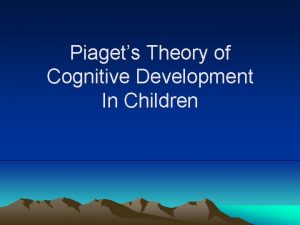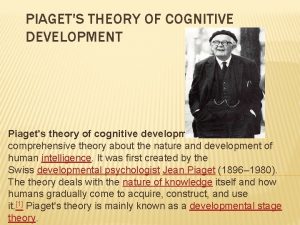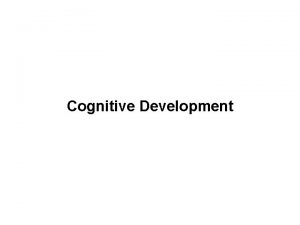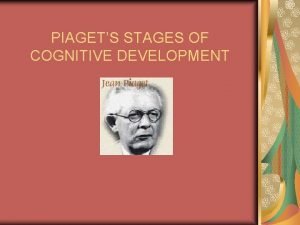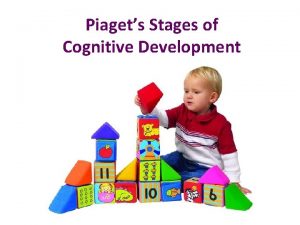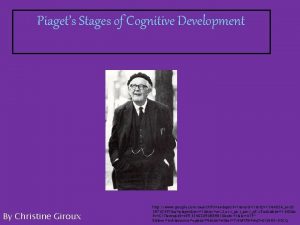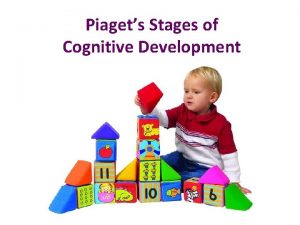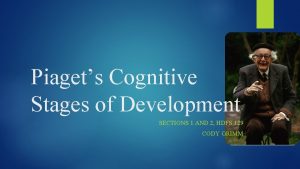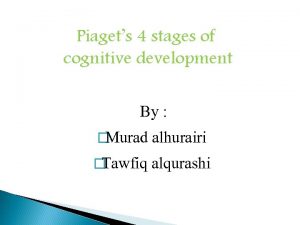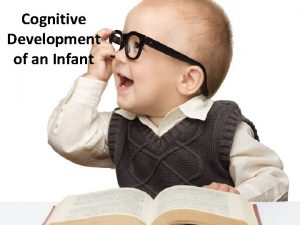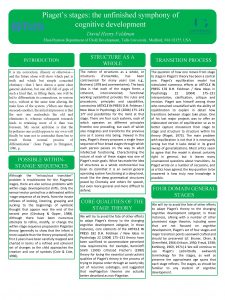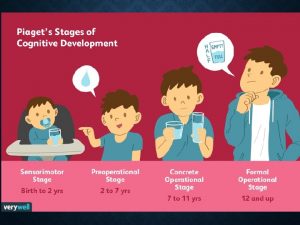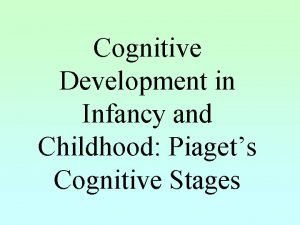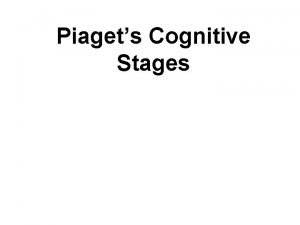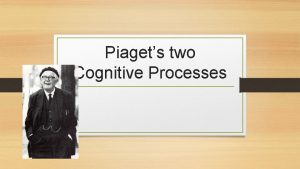Three Minute Review COGNITIVE DEVELOPMENT Piagets Stages 1



























- Slides: 27


Three Minute Review COGNITIVE DEVELOPMENT Piaget’s Stages 1. Sensorimotor Stage (0 -2) • physics, senses, movement, object permanence 2. Preoperational Stage (2 -7) • symbolic, egocentric, no conservation 3. Concrete Operational (7 -12) • • • conservation of number, length, volume, mass can take others’ perspective become more logical 4. Formal Operational (12+) • • • scientific thought, abstract reasoning critiques of Piaget’s theories information processing perspective

THEORY OF MIND • Why is the human brain so big (relative to body size)? – social group size • bigger groups require bigger brains to keep track of relationships • optimal group size for humans: 150 – social (Machiavellian) intelligence • example: reciprocal altruism • Testing theory of mind – Heider’s moving shapes • people can’t help but attribute “minds” to animate objects – False belief tests: Sally-Ann test, Smarties test – False picture tests – lying

THEORY OF MIND • normal children – develop theory of mind around age 4 – do better with false belief than false picture test • autistic children – absent/impaired theory of mind – do okay with false picture than false belief – not due solely to intellectual impairments • Down’s syndrome children pass theory of mind tests – Asperger’s syndrome: high-functioning autism

Test Yourself In the container test, children are shown a familiar kind of container such as an M&M bag and asked what the bag contains. Most 3 - and 4 -year-old children respond appropriately and are then asked to open the bag. Once opened, the bag is found to contain an unpredicted item, such as a pencil. The bag is then closed, and the children are asked to guess what another person who has not looked inside will think is in it. What typically happens? A. Most 3 - and 4 -year-olds will answer “M&Ms. ” B. Most 3 - and 4 -year-olds will answer “pencil. ” C. Most 3 -year-olds will answer with “pencil, ” but most 4 -yearolds will answer “M&Ms. ” D. Most 3 -year-olds will answer with “M&Ms, ” but most 4 -yearolds will answer “pencil. ” E. Most 3 -year-olds will give a specific prediction, but most 4 year-olds will refuse to answer.

Recommended Homework • Prior to Tuesday’s class, I would like you try at least one experiment from the web site below. You can pick between experiments on your perception of age, race, gender, and American presidential candidates. https: //implicit. harvard. edu/implicit/demo/measureyourattitudes. html • On Tuesday, we will discuss the rationale behind these experiments and it will be easier for you to understand if you’ve tried it yourself.

Autism • There is from the start an extreme autistic aloneness that, whenever possible, disregards, ignores, shuts out anything that comes to the child from the outside. ” -- Leo Kanner, 1943 • deficits in social interaction – don’t look at others • impaired communication – problems with both verbal and nonverbal communication • restricted interests – focus on details – may seek sensory stimulation (e. g. , body rocking)

Social Perception • How do we perceive ourselves? • How do we perceive others?

Self Awareness: The Mirror Test Who passes the test? • human children > 15 mos. • chimps > 6 -8 years old • dolphins • one gorilla (Koko) • some monkeys? • while individual is asleep or anesthetized, put a red spot on their face/body • see how they behave when they see themselves in the mirror • do they realize it’s them?

Is there one “self”? : Roles

Self Complexity

Reference Groups • We see ourselves in contrast to those around us • bronze medalists are typically happier than silver medalists • how good are we at judging the reference group?

Better-than-average Effect – 90% of adults consider themselves “above average” drivers – 94% of college professors rated themselves better than average – in one study, no college-bound seniors rated themselves below average and 25% rated themselves in the top 1%

Incompetence • Many people are incompetent at judging their own incompetence across many domains (humor, grammar, logic) Sense of Humor

Self Appraisal • most people see themselves in a move positive light than others see them • most people see their current selves as more positive than they see their past selves • people with high self-esteem make downward comparisons; people with high selfesteem make upward comparisons

Self-fulfilling prophecy The Pygmalion effect • In the myth, Pygmalion created a statue that he treated with such affection, it came to life • 1968 experiment in a lower class San Francisco elementary school Robert Rosenthal – gave students an IQ test – told teachers that the test had identified students who were “late bloomers” and would show a spurt in IQ growth – the experimenters randomly selected 20% of the pupils who were identified to the teachers as late bloomers (in reality, these students were no different in their IQs than the remaining 80%) – after one year those students showed significantly higher IQ scores (an increase of 12 points compared to 4 points in the other students) • works on rats too!

Attribution • the process by which people infer the causes of other people’s behavior • Example: Why did your boss yell at your co-worker? – co-worker was slacking off and deserved it? – boss is always a hothead? – boss is usually easygoing but is undergoing a divorce that has her stressed out? – boss really needed this particular job to be done right because her job is on the line External factors • people, events, situation, environment Internal Factors • traits, needs, intentions

Consider an Example Kelley’s 3 questions in making an attribution • does this person regularly behave this way in this situation? • do others regularly behave this way in this situation? • does this person behave this way in many other situations?

Person Bias fundamental attribution error • most common error • people give too much weight to personality and too little weight to the situation • more common in Westernized societies

Actor-Observer Discrepancy • I did it because of the situation; You did it because of your personality • can be influenced by point of view – see self on videotape personality attribution – see videotape from other’s POV situation attribution

Prior Information Effects • Mental representations of people (schemas) can effect our interpretation of them – Kelley’s study • students had a guest speaker • before the speaker came, half got a written bio saying speaker was “very warm”, half got bio saying speaker was “rather cold” • “very warm” group rated guest more positively than “rather cold” group

Attractiveness Bias

Attitudes • “beliefs tinged with emotion” • e. g. , good vs. bad, moral vs. immoral

Cognitive Dissonance • • attitudes must be consistent with behavior if they are not, people experience discomfort must either change behavior or change attitude usually it’s easier to change the attitude

Insufficient Justification Effect • If people cannot justify their behavior, they’re likely to change their beliefs about it • Experiment (Festinger & Carlsmith, 1959) – gave subjects a boring task – asked subjects to lie to the next subject and say the experiment was exciting – paid ½ the subjects $1, other ½ $20 – then asked subjects to rate boringness of task – $1 group rated the task as far more fun than the $20 group – each group needed a justification for lying • $20 group had an external justification of money • since $1 isn’t very much money, $1 group said task was fun

Initiation Rites

Belief in a Just World • belief that people get what they deserve • blaming the victim – “gays deserve AIDS” – the rape victim was “asking for it”
 Det kognitiva perspektivet
Det kognitiva perspektivet Criticisms of piagets theory
Criticisms of piagets theory Piaget ve vygotsky dil gelişim karşılaştırılması
Piaget ve vygotsky dil gelişim karşılaştırılması What drives people
What drives people Gamit ang teknik na three minute review
Gamit ang teknik na three minute review Three minute review
Three minute review Three minute review
Three minute review Three minute review
Three minute review Three minute review
Three minute review 60 seconds make 1 minute
60 seconds make 1 minute Cognitive and non cognitive religious language
Cognitive and non cognitive religious language Autonomous stage of learning
Autonomous stage of learning Intellectual development middle adulthood
Intellectual development middle adulthood Reflective and relativistic thinking
Reflective and relativistic thinking Late childhood cognitive development
Late childhood cognitive development Ap psych schema
Ap psych schema Intellectual development in later adulthood
Intellectual development in later adulthood Cognitive learning theory by jerome bruner
Cognitive learning theory by jerome bruner Siegler theory
Siegler theory Postformal thought
Postformal thought Ib psychology cognitive level of analysis
Ib psychology cognitive level of analysis Characteristics of cognitive development
Characteristics of cognitive development Piaget information processing theory
Piaget information processing theory Information processing theory of cognitive development
Information processing theory of cognitive development Cognitive development in education
Cognitive development in education Middle adulthood cognitive development
Middle adulthood cognitive development Cognitive development during early adulthood
Cognitive development during early adulthood Bandura theory
Bandura theory
